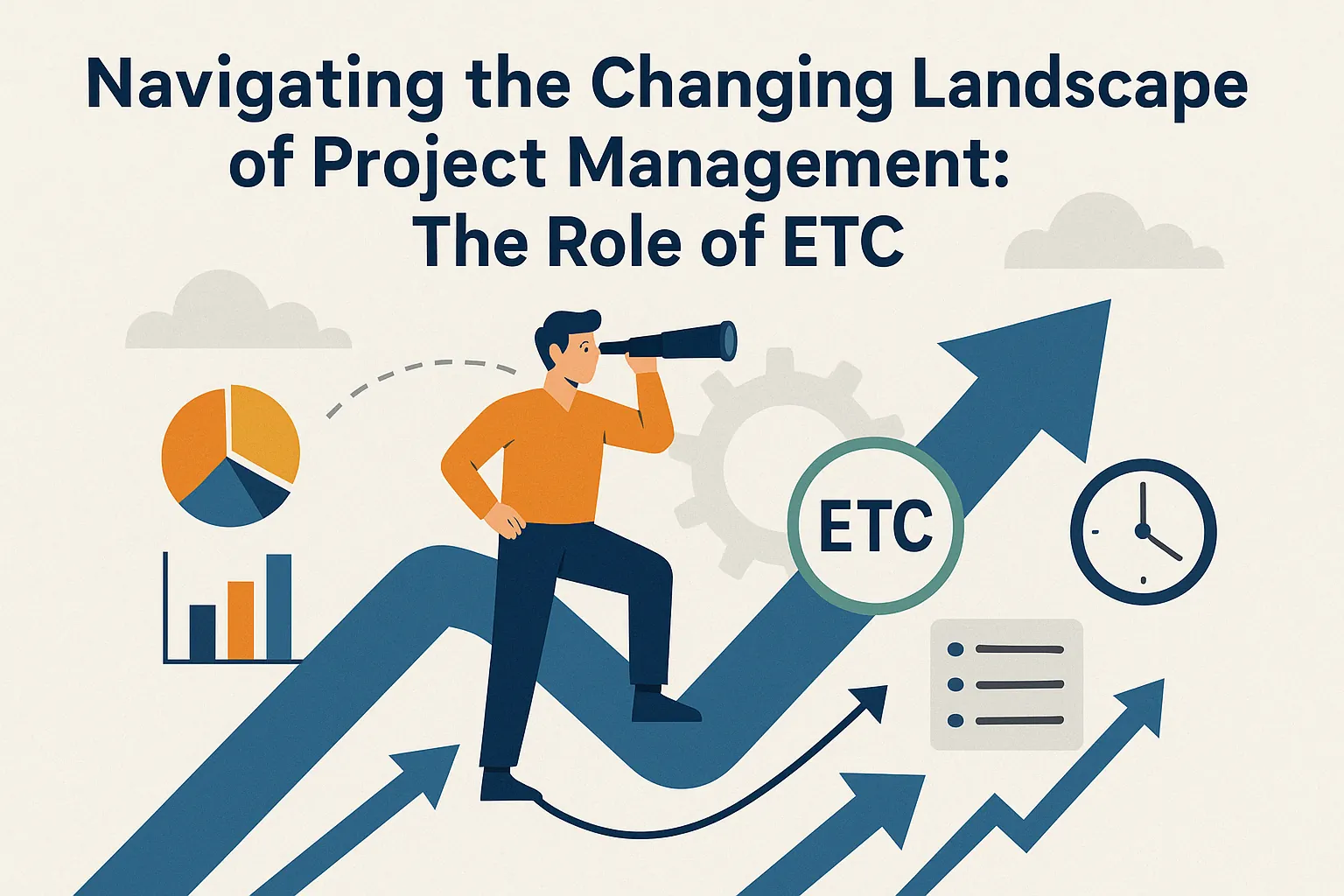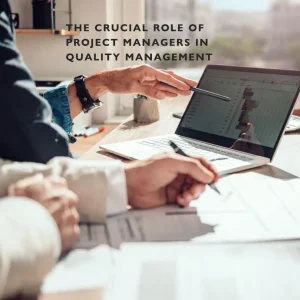Introduction to Project Management Trends
Staying abreast of recent trends is crucial for professionals aiming to enhance their effectiveness and drive project success. As we navigate through 2025, several key trends are shaping the landscape of project management, emphasizing the need for adaptability and innovative practices.
- Overview of Recent Trends in Project Management: The project management domain is increasingly embracing new technologies such as artificial intelligence (AI), automation, and data analytics. These advancements are not merely about adopting new tools; they represent a fundamental shift in how projects are managed. The rise of hybrid project management methodologies, which blend traditional and agile approaches, is also notable. This flexibility allows project managers to respond effectively to changing project requirements and stakeholder needs, reflecting a broader trend towards more adaptive project delivery practices [3][12].
- Importance of Adaptability in Project Management: As organizations face new challenges and requirements, the ability to adapt is paramount. Project managers must be proficient in utilizing emerging technologies and methodologies to remain competitive. The emphasis on sustainability, collaboration, and employee well-being further underscores the necessity for a flexible approach in project management. This adaptability not only enhances project outcomes but also fosters a culture of continuous improvement within teams [11][14].
- Introducing the Concept of ETC (Estimate to Complete): Within this evolving landscape, the Estimate to Complete (ETC) emerges as a critical metric for project managers. The ETC provides a forecast of the costs remaining for project completion, allowing for more accurate financial planning and resource allocation. As project management practices evolve, the role of ETC becomes increasingly significant, enabling stakeholders to make informed decisions based on current performance and expenditures. This adaptability in utilizing ETC is essential for navigating the complexities of modern project management [7][8][4].
Understanding ETC: Definition and Importance
The Estimate to Complete (ETC) is a vital forecasting tool that provides project managers with insights into the remaining costs required to finish a project. As project management methodologies evolve, understanding the role of ETC becomes increasingly important for professionals aiming to navigate these changes effectively.
Definition of Estimate to Complete (ETC)
Estimate to Complete (ETC) is defined as the forecast of the additional costs needed to complete the remaining work on a project. It is a crucial component of project cost management, allowing project managers to assess how much more funding is necessary to reach project completion. The calculation of ETC typically involves analyzing the actual costs incurred to date and estimating the costs for the remaining tasks. This can be expressed mathematically as:
ETC = BAC – EV
Where:
– EAC (Estimate at Completion) is the total estimated cost of the project at its completion.
– AC (Actual Cost) is the total cost incurred so far.
This formula helps project managers to dynamically adjust their financial forecasts as the project progresses, ensuring that they remain aligned with the budgetary constraints and project goals [1][4][12].
Importance of ETC in Project Forecasting and Budgeting
The significance of ETC in project forecasting and budgeting cannot be overstated. It serves several key functions:
- Financial Planning: ETC allows project managers to predict future expenses accurately, which is essential for maintaining financial control over the project. By providing a clear estimate of the remaining costs, ETC helps in making informed decisions about resource allocation and budget adjustments [3][14].
- Risk Management: As projects often encounter unforeseen challenges, having a reliable ETC enables project managers to identify potential financial risks early. This foresight allows for proactive measures to mitigate risks, ensuring that the project remains on track [10][11].
- Dynamic Adjustments: In a rapidly changing project environment, ETC facilitates the dynamic adjustment of budgets based on real-time data. This adaptability is crucial for responding to changes in project scope, timelines, or resource availability [11][13].
Tracking Project Progress and Performance
ETC plays a pivotal role in tracking project progress and performance. By continuously updating the ETC as the project evolves, managers can:
- Monitor Financial Health: Regularly assessing the ETC provides insights into the project’s financial health, allowing for timely interventions if costs begin to exceed expectations [9][10].
- Enhance Decision-Making: With accurate ETC data, project managers can make better-informed decisions regarding project direction, resource allocation, and stakeholder communication. This transparency fosters trust among stakeholders and enhances overall project governance [11][14].
- Evaluate Performance Metrics: ETC is often used in conjunction with other performance metrics, such as the Estimate at Completion (EAC) and Budget at Completion (BAC), to provide a comprehensive view of project performance. This holistic approach enables project managers to evaluate whether the project is on schedule and within budget [10][15].
ETC in the Context of Agile Project Management
The concept of Estimate to Complete (ETC) has gained significant traction, particularly within Agile methodologies. As Agile frameworks like Scrum and Kanban continue to dominate the project management sphere, understanding how ETC adapts to these principles is crucial for project management professionals and enthusiasts.
Agile Project Management Principles and Frameworks
Agile project management is characterized by its iterative and incremental approach, focusing on delivering requirements through collaboration and adaptability. The Agile Manifesto outlines core values and principles that emphasize customer collaboration, responding to change, and delivering working software frequently. Two of the most widely adopted frameworks within Agile are:
- Scrum: This framework promotes an empirical process, allowing teams to respond rapidly and effectively to changes. Scrum emphasizes roles such as the Scrum Master, who guides the team, and the Product Owner, who manages the product backlog.
- Kanban: This method focuses on visualizing work, limiting work in progress, and enhancing flow. Kanban boards are commonly used to track tasks and improve efficiency.
Both frameworks prioritize transparency and communication, which are essential for effective project management.
Utilizing ETC Metrics in Agile Environments
In Agile environments, ETC serves as a vital metric for estimating the remaining effort required to complete project tasks. It allows teams to assess their progress and make informed decisions about resource allocation and scope management. The application of ETC in Agile can be summarized as follows:
- Continuous Assessment: Agile teams regularly review their progress during sprint retrospectives and daily stand-ups, making it easier to update ETC estimates based on current performance and any changes in project scope.
- Flexibility: Given the dynamic nature of Agile projects, ETC can be adjusted as new information emerges, ensuring that estimates remain relevant and accurate.
- Collaboration: ETC encourages team collaboration, as all members contribute to the estimation process, fostering a shared understanding of project goals and challenges.
Benefits of Using ETC for Agile Teams
Implementing ETC in Agile project management offers several advantages that enhance the team’s ability to manage scope and resources effectively:
- Improved Resource Management: By providing a clear picture of the remaining work, ETC helps teams allocate resources more efficiently, ensuring that tasks are completed on time and within budget.
- Enhanced Scope Control: ETC allows teams to monitor scope changes and their impact on project timelines, enabling proactive adjustments to maintain project objectives.
- Informed Decision-Making: With accurate ETC metrics, project managers can make data-driven decisions regarding prioritization and risk management, ultimately leading to better project outcomes.
ETC and Remote Project Management
The landscape of project management has undergone significant changes, particularly with the rise of remote work. As organizations increasingly rely on distributed teams, the concept of Estimated Time to Completion (ETC) has become crucial in navigating these new dynamics. Here’s an analysis of how ETC adapts to the evolving trends in project management, especially in remote settings.
The Rise of Remote Project Management
Technological advancements have transformed the way teams collaborate and manage projects. The shift to remote project management has been accelerated by the need for flexibility and the ability to tap into a global talent pool. Key factors contributing to this trend include:
- Increased Connectivity: Tools such as video conferencing, project management software, and instant messaging have made it easier for teams to communicate and collaborate, regardless of their physical location.
- Flexibility and Work-Life Balance: Remote work allows for more flexible schedules, which can lead to increased productivity and job satisfaction among team members.
- Cost Efficiency: Organizations can save on overhead costs associated with maintaining physical office spaces, allowing for reallocation of resources to other critical areas.
How ETC Assists in Tracking Progress in a Remote Work Environment
In a remote work setting, tracking project progress can be challenging due to the lack of face-to-face interactions. ETC plays a vital role in this context by providing a clear framework for monitoring project timelines and deliverables. Here’s how ETC can assist:
- Clear Milestones: By establishing clear milestones and deadlines, project managers can use ETC to gauge how much time is left to complete tasks, helping to keep the team focused and accountable.
- Real-Time Updates: Utilizing project management tools that integrate ETC allows for real-time updates on task completion, enabling managers to adjust timelines and resources as needed.
- Enhanced Visibility: ETC provides a transparent view of project progress, which is essential for remote teams. This visibility helps in identifying potential bottlenecks early and facilitates timely interventions.
Tips for Project Managers to Effectively Use ETC with Remote Teams
To maximize the effectiveness of ETC in managing remote teams, project managers can implement the following strategies:
- Set Clear Expectations: Clearly define project goals, timelines, and individual responsibilities from the outset. This clarity helps team members understand their roles and the importance of their contributions to the overall project.
- Regular Check-Ins: Schedule regular check-ins to discuss progress, address challenges, and adjust ETC estimates as necessary. These meetings foster communication and ensure that everyone is aligned on project objectives.
- Utilize Technology: Leverage project management tools that support ETC tracking. Tools like Asana, Trello, or Microsoft Project can help visualize timelines and progress, making it easier for remote teams to stay on track.
- Encourage Collaboration: Foster a culture of collaboration by encouraging team members to share updates and challenges openly. This approach not only enhances accountability but also promotes a sense of community among remote workers.
Integrating ETC with New Project Management Tools
The concept of Estimated Time to Completion (ETC) plays a crucial role in ensuring projects are delivered on time and within budget. As project management tools continue to advance, integrating ETC tracking into these platforms has become essential for professionals aiming to enhance their project outcomes. Here’s an overview of how modern project management tools support ETC tracking, the features that enhance its use, and examples of successful integrations.
Overview of Popular Project Management Tools that Support ETC Tracking
Several project management tools have emerged as leaders in the industry, offering robust features that facilitate effective ETC tracking. Some of the most notable tools include:
- Asana: Known for its user-friendly interface, Asana allows teams to set deadlines and track progress, making it easier to estimate the time required to complete tasks.
- Trello: Utilizing a card-based system, Trello enables users to visualize project timelines and adjust ETC estimates as tasks progress.
- Microsoft Project: A more traditional tool, Microsoft Project offers advanced scheduling features that allow for detailed ETC calculations based on resource allocation and task dependencies.
- Jira: Primarily used in software development, Jira provides agile project management capabilities, including sprint planning and tracking, which are essential for accurate ETC assessments.
These tools not only support ETC tracking but also integrate seamlessly with other project management methodologies, enhancing overall project visibility and control.
Features that Enhance the Use of ETC in Project Tools
Modern project management software comes equipped with features that significantly enhance the tracking and management of ETC. Key features include:
- Real-Time Collaboration: Many tools offer real-time updates and collaboration features, allowing team members to adjust their estimates based on current project status and workload.
- Automated Reporting: Automated reporting features help project managers quickly assess ETC against actual progress, enabling timely adjustments to project plans.
- Resource Management: Tools that provide insights into resource allocation and availability can help refine ETC estimates by considering team capacity and workload.
- Integration with Time Tracking: Integrating time tracking functionalities allows teams to compare estimated times with actual time spent, leading to more accurate future estimates.
These features not only streamline the process of tracking ETC but also foster a culture of accountability and transparency within project teams.
Examples of Successful Integration of ETC within Project Management Solutions
Several organizations have successfully integrated ETC tracking into their project management processes using modern tools. For instance:
- A Software Development Company: By utilizing Jira, the company implemented a system where developers could log their time against tasks. This integration allowed project managers to adjust ETC estimates dynamically based on real-time data, leading to a 20% improvement in project delivery times.
- A Marketing Agency: The agency adopted Asana to manage client projects. By leveraging Asana’s reporting features, they could track ETC alongside actual completion times, which helped them refine their project timelines and improve client satisfaction.
- A Construction Firm: Using Microsoft Project, the firm integrated ETC tracking with resource management features. This allowed them to optimize their workforce allocation, resulting in a significant reduction in project overruns.
These examples illustrate how effective integration of ETC tracking within project management tools can lead to improved project outcomes, better resource management, and enhanced team collaboration.
Case Studies: Success Stories of ETC Implementation
This section presents real-world examples of organizations that have successfully implemented ETC, showcasing how it has adapted to evolving project management trends and contributed to project success.
1. Hospital El Pilar: Enhancing Healthcare Delivery
- Challenge: Hospital El Pilar faced significant challenges in managing project timelines and resource allocation during the construction of a new wing. The complexity of healthcare regulations and the need for timely delivery were critical.
- ETC Implementation: By integrating ETC into their project management approach, the hospital was able to gain a clearer understanding of the remaining work and associated costs. This allowed for better forecasting and resource management.
- Outcomes: The implementation of ETC led to a 20% reduction in project delays and a 15% decrease in overall costs. The hospital successfully opened the new wing on schedule, significantly improving patient care and operational efficiency [2][10].
2. Vocalink: Revolutionizing Financial Transactions
- Challenge: Vocalink, a payment systems provider, needed to develop a real-time money transfer system between banks in the UK. The project faced tight deadlines and high stakeholder expectations.
- ETC Implementation: Utilizing ETC, Vocalink was able to continuously assess the remaining work and adjust resources accordingly. This proactive approach allowed the team to identify potential bottlenecks early in the process.
- Outcomes: The project was completed two months ahead of schedule, resulting in a 30% increase in transaction speed and a 25% reduction in operational costs. The successful implementation of ETC not only met but exceeded stakeholder expectations, enhancing Vocalink’s reputation in the industry [9][10].
3. Sydney Opera House: A Timeless Icon
- Challenge: The Sydney Opera House project faced numerous challenges, including budget overruns and scheduling conflicts. The complexity of the design and construction processes required innovative management strategies.
- ETC Implementation: By applying ETC principles, project managers were able to track progress against the budget and timeline more effectively. This allowed for real-time adjustments and better communication among stakeholders.
- Outcomes: The project ultimately became a landmark achievement, with the Opera House completed with a 10% reduction in projected costs. The effective use of ETC contributed to the successful delivery of one of the world’s most iconic structures, demonstrating the importance of adaptability in project management [13][14].
4. Public Sector IT Projects: Government Innovations
- Challenge: Various city, county, and state projects faced challenges related to budget constraints and the need for transparency in project execution.
- ETC Implementation: The Government Specific Interest Group (GovSIG) utilized ETC to enhance project visibility and accountability. By regularly updating ETC metrics, project managers could provide stakeholders with accurate forecasts and progress reports.
- Outcomes: The implementation of ETC in these public sector projects resulted in a 40% improvement in project delivery times and a 25% increase in stakeholder satisfaction. This case illustrates how ETC can be effectively adapted to meet the unique needs of government projects [12][15].
Future of ETC in Project Management
The concept of Earned Value Management (EVM) and its associated metrics, particularly Estimate to Complete (ETC), are becoming increasingly significant. The future of ETC in project management is poised to be shaped by several key trends and advancements:
- Advancements in Project Management Methodologies: The shift towards hybrid project management methodologies is gaining traction, blending traditional and agile approaches. This evolution necessitates a more nuanced understanding of ETC, as project managers will need to adapt their estimation techniques to fit diverse project environments. The flexibility inherent in hybrid methodologies allows for real-time adjustments to ETC calculations, ensuring that they remain relevant and accurate as project dynamics change [10][11].
- Impact of Data Analytics and AI: The integration of data analytics and artificial intelligence into project management practices is set to revolutionize how ETC is calculated and utilized. With AI’s ability to analyze vast amounts of data, project managers can expect more precise forecasts and insights into project performance. This technological advancement will enable more informed decision-making, allowing for proactive adjustments to project plans based on real-time data. As organizations increasingly rely on these tools, the role of ETC will expand to encompass predictive analytics, enhancing its effectiveness in managing project costs and timelines [5][9][13].
- Encouraging Adaptability and Innovation: In a rapidly changing project landscape, project managers must cultivate a mindset of adaptability and innovation in their use of ETC. As new challenges and opportunities arise, the ability to pivot and adjust ETC practices will be crucial. Project managers should embrace continuous learning and stay informed about emerging trends and technologies that can enhance their ETC methodologies. This proactive approach will not only improve project outcomes but also position project managers as leaders who can inspire their teams to navigate complexities with confidence [7][11][15].
Conclusion: Embracing Change in Project Management
The Estimated To Complete (ETC) plays a pivotal role in ensuring that projects remain on track and within budget. As project management trends shift towards more agile methodologies and data-driven decision-making, understanding and effectively utilizing ETC becomes increasingly important. Here are the key points to consider:
- Importance of ETC: The ETC represents the expected cost required to complete the remaining work of a project, serving as a crucial financial forecast that helps project managers allocate resources effectively and make informed decisions. By accurately assessing the ETC, project managers can navigate the complexities of modern project management, ensuring that they are prepared for any changes that may arise during the project lifecycle [1][6].
- Continuous Learning and Adaptation: The dynamic nature of project management necessitates a commitment to continuous learning and adaptation. As new tools, techniques, and methodologies emerge, project managers must stay informed and be willing to adjust their strategies accordingly. Embracing the concept of ETC not only aids in financial forecasting but also encourages a proactive approach to managing project risks and uncertainties [2][15].
Find out more about Shaun Stoltz https://www.shaunstoltz.com/about/.
This post was written by an AI and reviewed/edited by a human.



